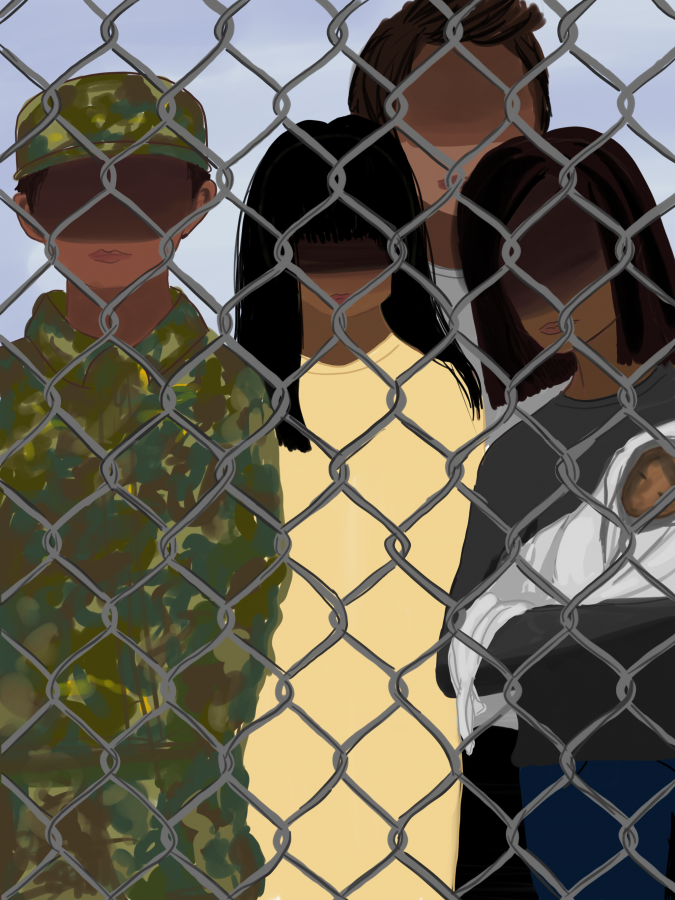Students traveled to San Diego and Tijuana, Mexico as part of the latest HW GO! Digital Storytelling trip, which allows students to share stories of countries recovering from conflict through short films and photography.
Staying true to the focus of these trips, students documented the struggles of those who live near the Mexican-American border and how strict border protection and deportation have affected their lives.
The 20 students began their four day trip in Old Town San Diego where they met with border patrol for an official tour of the Mexican-American border. With four patrol agents, they explored “No Man’s Land,” the area of land between the two fences where the Tijuana and U.S. border lies.
During their stay in Old Town, the students also learned about the history of Chicano Park, located beneath the San Diego-Coronado Bridge in Barrio Logan. The park is home to the largest collection of murals in America, containing a large volume of cultural history and significance for the predominantly Mexican-American and immigrant community living there.
Over the next three days, the students spent time on the other side of the border in Tijuana. The students focused mostly on their projects for the trip, interviewing different groups of people living in the border city, many having been recently deported from the United States.
The two groups that students mainly worked with were “Las Madres”, a support group for deported mothers, and a veteran support group consisting of U.S. army and military veterans.
“These are men who have served in the U.S. Army or the U.S. Military, but they were, like dreamers, brought to the U.S. when they were little children so they were never citizens but they served in the army,” upper school Visual Arts Head and Director of HW GO! Cheri Gaulke said. “They were told they would become citizens but they never did become citizens and so if they ever have a traffic violation or something, they can be deported.”
Listening to the stories and experiences of these deportees, the students said they gained new insight and perspectives on what life is like as an illegal immigrant and how increased border protection affected their lives.
“Interviewing deportees, especially mothers and veterans, was an eye-opening experience in that, while a lot of us have near perfect lives here in the U.S., so many people struggle to be with their families and to have the opportunities that we do,” Justin Park ’20 said. “The fact that families are being torn apart every day in the U.S. makes me hope for a better future where everyone is given the equal opportunity to care for themselves and for their families in a place where they are not judged for their roots.”
The faculty chaperones said they were also touched by the stories they heard while observing the students work.
“It was very powerful,” Gaulke said. “These were people that served our country, they had [Post-Traumatic Stress Disorder], they were proud veterans. They didn’t speak Spanish. They didn’t know anybody in Mexico. They literally just get booted across the border with the clothes on their back.”
To help with their projects, students worked with Dignicraft, a media company in Tijuana.
Outside of conducting interviews and working on their projects, the students visited museums and cultural centers.
Prior to the trip, the students gathered for a one day workshop with the trip’s faculty mentors. At the workshop, the students learned basic video skills and worked with other artists who have done work relating to border control and deportation. They discussed ethical issues associated with documenting other people’s stories and learned about some of history on the border.
After the end of the trip, the students gathered into small workshops where they could work on and edit their projects. During this time, they consulted with faculty mentors on how to organize their material into projects that accurately depicted the stories of the people they met on the trip.
All projects will be on display in the Ahmanson Lecture Hall on Feb. 27 at 7 p.m. The showcase will include a showing of all the films made during the trip, as well as a photography exhibition featuring student shots from their time in San Diego and Tijuana. The students will present their projects and answer questions.
“I encourage my fellow students to take action in any way they can, even if it is simply by coming to our exhibition in late February to learn more about what is going on and by sharing the deportees’ stories with the rest of the world,” Park said. “We are the leaders of the future, and have the most chances to make a difference.”
MexiGO!
February 13, 2018





































